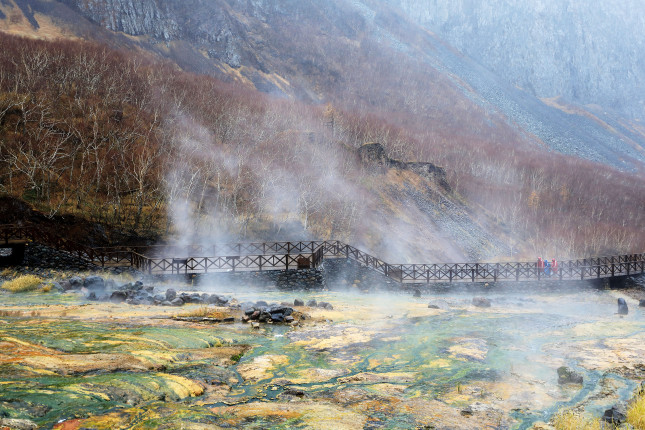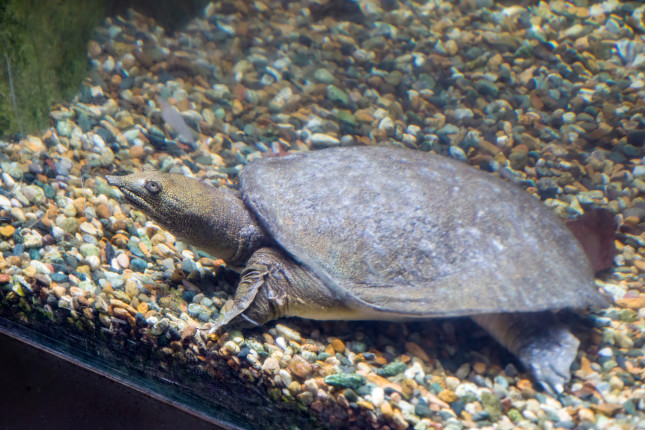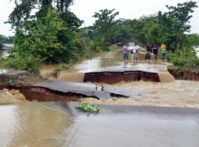-
U.S. and Chinese Aquaculture Taps into a Carbon-Free Geothermal Energy Source
October 28, 2021 By Karen Mancl
From Friday night fish fries to shrimp cocktails, people sheltering in place have learned how to cook their favorite dishes at home. As a result U.S. seafood sales have doubled during the pandemic. Globally, the United States ranks fifth in seafood consumption and China—where hunger for seafood has skyrocketed with rising incomes—is number one. While wild fisheries are on the decline, aquaculture is expanding to increase the global food supply.
Aquaculture depends on warm water to grow healthy and abundant seafood. When looking for ways to increase yield and grow seafood year-round in cold areas, hot water from geothermal wells and springs provides a green resource. Twenty countries worldwide are tapping into geothermal heat sources for aquaculture to farm fish, crustaceans (like shrimp), amphibians, and reptiles—with China, the United States, Iceland, Italy, and Israel in the lead. Usage of geothermal heat sources for aquaculture has increased more than 13 percent since 2015. While still small (less than one percent of aquaculture currently uses geothermal heat), it offers a lucrative and low carbon development opportunity for some rural communities.
Growing alligators in Idaho
The United States is the largest user of geothermal energy in agriculture and has 58 aquaculture sites. With geothermal energy, nearly 20 species of amphibians, fish, and shrimp are raised at a constant temperature, outperforming even a naturally mild climate. The Imperial Valley of California and the Snake River Plain of Idaho have used geothermal water for aquaculture since the 1970s. Texas, Arizona, Nevada, New Mexico, and Oregon also have geothermal aquaculture farms.
In California, artesian free-flowing hot springs and shallow wells provide water up to 165 ºF (74 ºC). Their location in the Imperial Valley allows the growers to easily truck striped bass, tilapia, and catfish to Asian-American markets in the San Francisco area. Geothermal development is encouraged in California to help meet the state’s Renewable Portfolio Standards. The California Department of Oil, Gas and Geothermal Resources is usually the lead agency for development of private lands, except in Imperial County, where the county assumed authority for managing geothermal development in 1985. California was the only state to create a research and development program in the 1980s to support geothermal projects.
Idaho is second behind California in geothermal capacity. The Idaho Statehouse is the only geothermally heated capitol building in the United States. In southern Idaho, aquaculture operations grow catfish, tilapia, bullfrogs, and up until 10 years ago, alligators using geothermal water. Water resource development and discharge of effluent into U.S. waters are regulated by state environmental agencies. To facilitate the development of geothermal in aquaculture, Gary Fornshell, retired University of Idaho Aquaculture Extension educator, was a member of the Idaho Geothermal Working Group formed in 2001 to create an energy development strategic plan. Using geothermal resources, Fornshell says, provides 90-160 ºF (32-71 ºC) water to mix with cold water so that Idaho aquaculture can achieve the ideal temperature to grow fish that would never survive naturally. By tapping into geothermal resources, Idaho growers produce 2 to 2.5 million pounds of tilapia that are shipped live to Asian markets in Seattle and Canada.
Growing eels and turtles in China
China has one-sixth of global geothermal resources. In contrast to the country’s main non-fossil energy sources that are mostly distributed in sparsely populated western China, 79 percent of geothermal resources are found in eastern China. Due to limited planning and policy support, geothermal development is far behind wind, solar, and biomass. Most of China’s geothermal sites are low temperature (less than 300 ºF or 150 ºC) which make them a perfect source to increase aquaculture production.
The 2011, 12th Five-Year Plan included geothermal development in the medium and long term, outlining its slow development as a clean energy source. China’s Geothermal Resources Survey Research Centre, established in 2013, issued a major assessment report in 2018 but did not mention geothermal development for agriculture or aquaculture. The 13th Five-Year Plan (2016 – 2020) targeted continued slow but steady development of geothermal in the Beijing-Tianjin region to reduce coal use. Currently, geothermal aquaculture is used on a small scale in over 20 provinces, including Beijing, Tianjin, Fujian and Guangdong to grow tilapia, eels, softshell turtles, shrimp, and bullfrogs on small farms.
The 2019 Chinese Ministry of Agriculture document, “Options on the Acceleration of Green Development of Aquaculture,” adopted a focus on income diversification and rural revitalization. The five-actions of green aquaculture work to reduce water pollution and improving fish quality, resulting in higher prices. However, the ministry has not included geothermal energy as a part of the green development plan.
Geothermal potential in aquaculture is still untapped.
In both the United States and China, the main constraints to accelerate the use of geothermal in aquaculture are policy, regulatory, technical, and financial. Initial investment to establish a geothermal fish farm can be high. Also, public support for research and technology development is currently low. The main regulatory hurdles are concerns about discharge causing water pollution.
Research and development support in the form of federal loan guarantees and tax credits for geothermal peaked in the United States during the late 1970s energy crisis, but quickly declined in the early 1980s. The new Energy Act of 2020 now extends tax credits for geothermal, eases access to federal lands for geothermal developers, and directs the Department of the Interior to set goals and issue permits for geothermal production. The act also includes $170 million to the Department of Energy for geothermal research and development.
Animals grown in water at the proper temperature grow faster and larger, by 50-100 percent, than those grown in fluctuating temperatures. With warm water available year-round, geothermal production continues through the winter and increases the number of crops per year. Fornshell points out that geothermal aquaculture is a non-consumptive beneficial use of water resources. No fossil fuel is burned to regulate the temperature of geothermal ponds while close to doubling food production in the same area. With more government support for growing seafood through aquaculture, including geothermal aquaculture, the industry will continue to take pressure off wild fisheries and provide a much-needed revenue source for rural communities.
Karen Mancl is a Professor of Food, Agricultural and Biological Engineering at The Ohio State University and is the Director of the OSU Soil, Environment Technology Learning Lab. She holds a PhD in Water Resources from Iowa State University, an MA in East Asian Studies and an MA in Public Policy from Ohio State University.
Sources: Asia Pacific Energy, California Energy Commission, China Petrochemical Press, Dig the Heat, EU Science Hub, Eurofish magazine, Geo-Heat Center, Geothermics, , Idaho Department of Water Resources, Idaho Department of Environmental Quality, Idaho Governor’s Office, India Documents, International, Geothermal Conference, National Renewable Energy Laboratory, New Security Beat, Oceaneos, Physiological Zoology, Renewable and Sustainable Energy Reviews, Seafood Source, Supermarket Perimeter, Utilities Policy
Lead Photo Credit: Water vapor rising from a hot spring under Jangbaek Falls at Baekdusan Mountain near Jilin, courtesy of Stock for you/Shutterstock.com.
 A Publication of the Stimson Center.
A Publication of the Stimson Center.







